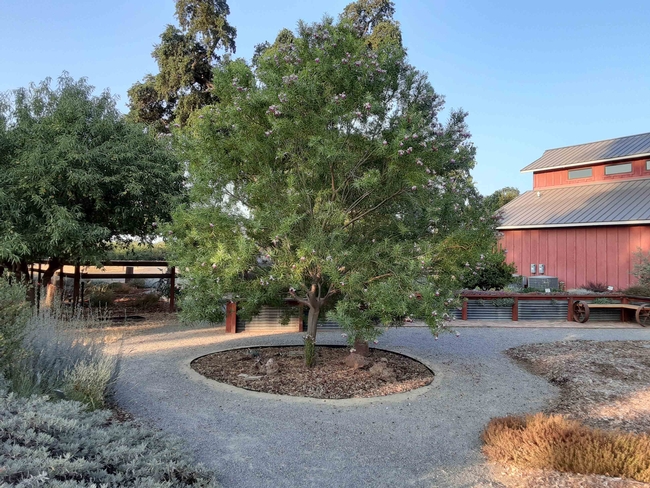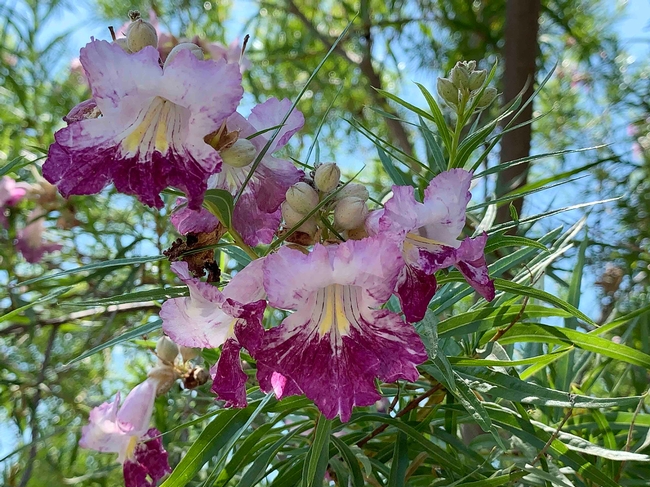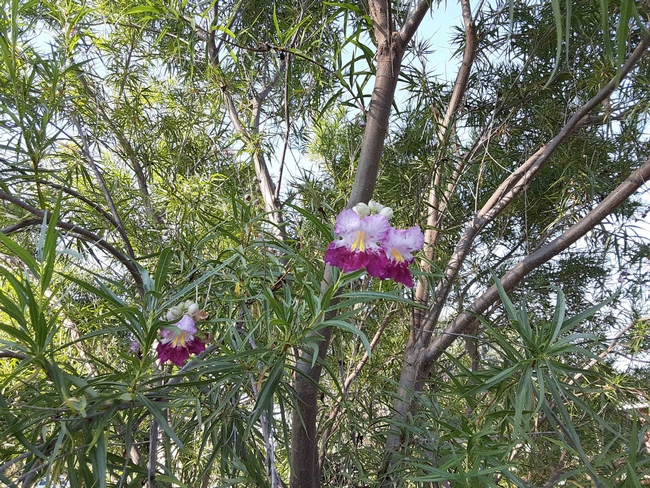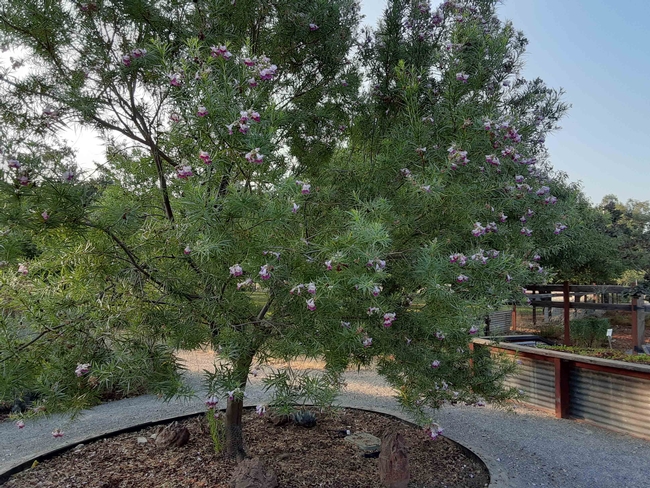Someone needs to tell the Urban Forests Ecosystems Institute (UFEI) that their tree location map is missing the desert willow (Chilopsis linearis) that was planted at the Master Gardener Demonstration Garden at Patrick Ranch several years ago.
Desert willow is a small landscape tree, Laura Lukes
A second great feature on the UFEI website is its registry of California's Big Trees – a description of the largest known individual specimen in the state. Porterville is where you will find the largest desert willow in California. Although the tree normally doesn't top out at over 25 feet, the specimen in Porterville is 40 feet tall, with a canopy spread of 36 feet and a trunk circumference of just over six feet. Pretty big for a tree billed by multiple sources as a “small accent tree” for your native landscaping.
Desert Willow blooms, Laura Kling
Since true willows love moist environments, “desert willow” is an oxymoron; C. linearis is not a true willow but a relative of the catalpa tree and a member of the trumpet vine family (Bignoniaceae). Its leaves do mimic those of willows: they are long and slender with smooth margins and waxy surfaces. The wax coating enables the tree to conserve water in the hot climates it prefers. The shape of the flowers, combined with the shape of its leaves, earned the desert willow its taxonomical name: Cheilos is Greek for lips, and opsis translates from Greek as “resembles.” The bright two-toned flowers (purple, lavender or pink, with white) have the tubular, droopy bottom lip shape characteristic of trumpet vine blossoms.
Desert willow has long, slender leaves and beautiful blossoms, Laura Lukes
There are many common names for this lovely tree: flowering willow, desert catalpa, willow-leaved catalpa, willowleaf catalpa, bow willow, flor de mimbre, and mimbre. Mimbre is a Spanish word that is sometimes translated as willow or wicker, but technically means the twigs and sprigs of willow trees that were woven into baskets or furniture.
The desert willow is native to the Southwestern U.S. and Northern Mexico; its native range in California is restricted to the arid southern portions of our state, primarily San Bernardino and Riverside counties. The US Department of Agriculture notes that it can occur naturally as far east as southwest Kansas and eastern Oklahoma. Anywhere that's hot, sunny, and dry, and not above 5,000 feet in elevation will support this hardy tree with a life span of between 40 and 150 years.
Desert willow provides some shade, Laura Lukes
The desert willow planted at the Master Gardener Demonstration Garden does provide a little bit of shade to the succulents planted beneath it, but its real value lies in the rich blue-green of its leaves and the eye-catching color and shape of its sweet-smelling flowers. Where it occurs in nature, it creates the feeling of a small oasis in the middle of dry desert washes. As a landscape specimen, it adds a lush look during summer heat to the native, drought resistant garden. It's a winning choice for a specimen tree.
The UC Master Gardeners of Butte County are part of the University of California Cooperative Extension (UCCE) system. To learn more about us and our upcoming events, and for help with gardening in our area, visit our website. If you have a gardening question or problem, email the Hotline at mgbutte@ucanr.edu (preferred) or call (530) 538-7201.



